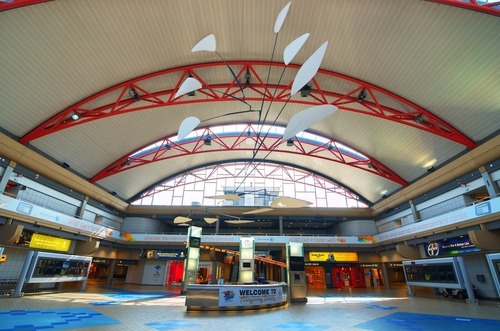
Officials broke ground on the new 700,000 square-foot terminal project at the Pittsburgh International Airport Thursday, the first terminal in the country to be built from the ground up post-pandemic.
Built with a focus on public health and technology, the new terminal will use clean air technology while providing space for social distancing and 90,000 square feet of outdoor pre- and post-security terrace space to ensure access to fresh air.
The terminal will also create jobs and boost the area’s economy, officials said.
“The new terminal program is a critical infrastructure project for the region and will deliver long-term economic benefits including jobs for more than 5,500 local construction and skilled trades workers,” Rich Fitzgerald, Allegheny County executive, said. “This is further proof of how our region continues to grow and develop when anchored by a thriving airport that opens the door to the world.”
The Airport Authority expects that the project will generate an estimate $2.5 billion in total economic impact, as well as 14,500 total direct and indirect jobs. The project is estimated to use 12,000 tons of steel, 94,000 tons of concrete and more than 354,000 square feet of wood materials, most of which the Airport Authority hopes will be locally sourced. Officials said it was among the largest infrastructure projects in the Pittsburgh area’s history.
“As we break ground with the concrete that has been here for decades, we break ground on more than a building; we break ground on the future of travel,” Christina Cassotis, CEO of the Allegheny County Airport Authority, which operates Pittsburgh International Airport and Allegheny County Airport, said. “Today, we are advancing a new standard for infrastructure projects that benefit our people and our communities first.”
In addition to implementing new industry-leading standards that break down barriers and increase opportunities for small businesses, women and people of color, the new terminal will also be among the most sustainable in the industry with officials building to LEED-certified silver or beyond. The building will be powered by the airport’s microgrid, fueled by 10,000 solar panels and five natural gas generators. During construction, a minimum of 75 percent of the waste generated will be recycled or reused, officials said, including concrete from the existing airfield ramps which will be used in constructing new roads. Plans also call for water conservation efforts including rainwater harvesting.